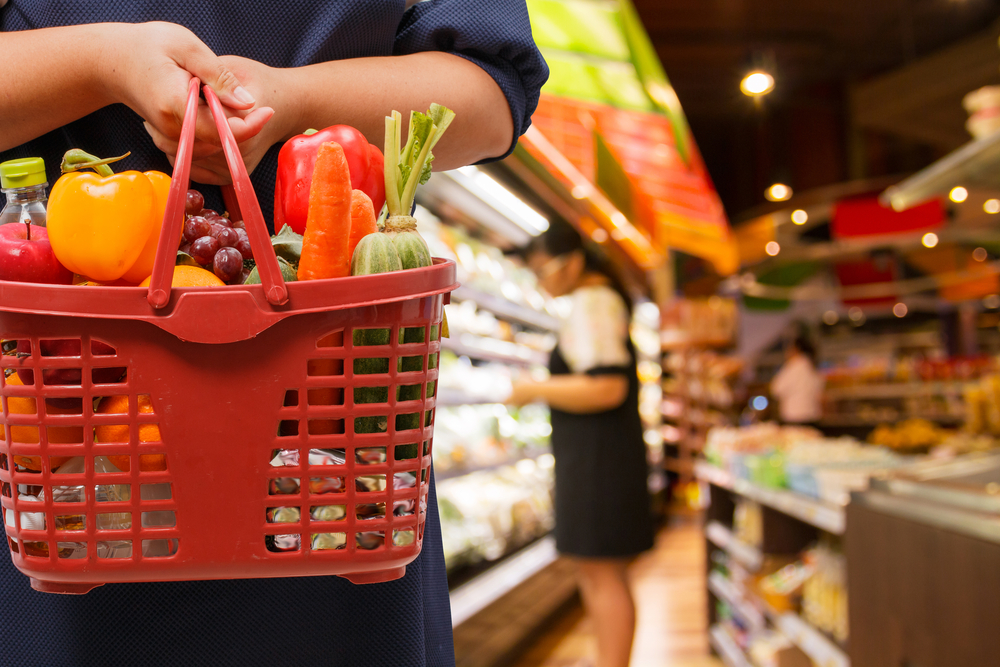Relearn how to grocery shop
Written by Angela Silva
You may think grocery shopping is just part of your routine, that you know what you’re doing each and every time you enter that giant pantry of endless culinary concoctions. But a grocery store is more like a board game, and every section, display, and worker is strategically positioned to get you to make a move. Indeed, you’re likely more of a sucker than you realize when it comes to grocery shopping.
Don’t believe me? Let me walk you through some common grocery store strategies so you can relearn how to shop with better control, dodging the marketing tactics that have duped you so far.
Department Arrangement
Consider almost every grocery store you’ve ever entered: the produce section is near the front, usually off to the right, with the bakery behind that in the back right corner. The meat and seafood section is in the far back, maybe off to the right a little, and the dairy section is almost always in the back left corner. Do you think this is random? Think again. The dairy section, specifically, is strategically placed so that you walk past almost half of the store to get there. This is because almost everybody who enters the store has some sort of dairy item on their list. It makes sense to put this section out of the way where you’ll have to pass everything else to get to it. Next time you’re at the store, be aware that your route to needed items is carefully calculated; this will help you resist enticing distractions.
End Caps and Product Placement
Isn’t it so convenient that the stores put the items you really need right at the front of the aisle, and it even looks like they’re on sale? It’s a nice thought, but actually a calculated design. The end caps are meant to catch your eye, to get you to grab and go instead of comparing prices down the aisle. Even if you dodge this trap, marketers place kid-magnet products at your child’s eye level. Doesn’t it drive you crazy when your kid notices the Frozen characters on every kind of cereal, and your shopping suddenly becomes a battle against animated princesses? Again, not a coincidence. The end caps and eye-level (to you or your kids) positions are actually coveted positions that the food manufacturers pay extra for to market their products. These spots rarely promote a good deal or genuinely make things easier for you. They are, once again, convincing you to buy products. If you want a good deal, crouch down toward the floor, and compare the generic and store brands. Chances are you’ll still get what you’re looking for but at a much lower price. As for the cereal aisle, you’ll probably just have to avoid it altogether when you have your kids with you.
The Right Hand Disadvantage
When you’re on a typical shopping trip, do you usually start on the far right of the store, making your way first past the produce and bakery? This isn’t a coincidence. Paco Underhill, an environmental psychologist and author of What Women Want: The Science of Female Shopping, reveals that grocery stores are planned that way: with 9 out of 10 people being right-handed, it is more convenient for shoppers to push the cart with their left hands and to grab things with their right hands. And stores are sure to place high-profit products at your right around the entirety of the store. First it’s usually baked goods, then produce, then meats, then dairy, then drinks, all at your right hand’s fingertips.
The Sample Stunt
You probably feel so proud—you sampled the cookies the darling little old lady offered and were able to say “no thanks” when she asked you to buy a box. I’m sorry to say she still won. Her goal was not necessarily to get you to buy a box of those cookies. Her goal was to trick you into thinking you’re hungry. Think about it: was she placed in front of the hardware section? Or the cleaning supplies? Nope. She’s right in front of the peanut butter and Nutella aisle, and after that cookie you suddenly notice this and I mean it wasn’t on your list but let’s just see what’s down that aisle anyway. Bam! You just bought 40 pounds worth of Nutella. The grandma wins again.
Perimeter Peril
You may have been taught that for healthy shopping, stick to the items sold around the perimeter of the store, right? Well, this rule is officially outdated. Marketers are one step ahead of their market, so with health-conscious people sticking to the outside, guess what food makers did? They put all of those grown-up candy bars (i.e. protein bars, breakfast bars, etc.), and sugar-loaded “super smoothies” right where you expect the healthy items to be, slapped a green label on them and the words “omega-3,” and bam!—marketers just successfully sold their item to health-conscious people, who think they found a new, delicious “smart” snack (despite the zillion grams of added sugar those bars and smoothies have per serving). Realize that stores make the majority of their profit off of perimeter food items.
Don’t be fooled by the professional grocery store designers and food marketers anymore! Keep their strategies in mind, stick to your plan, and keep your money in your wallet by relearning how to navigate your grocery store.


No Comment